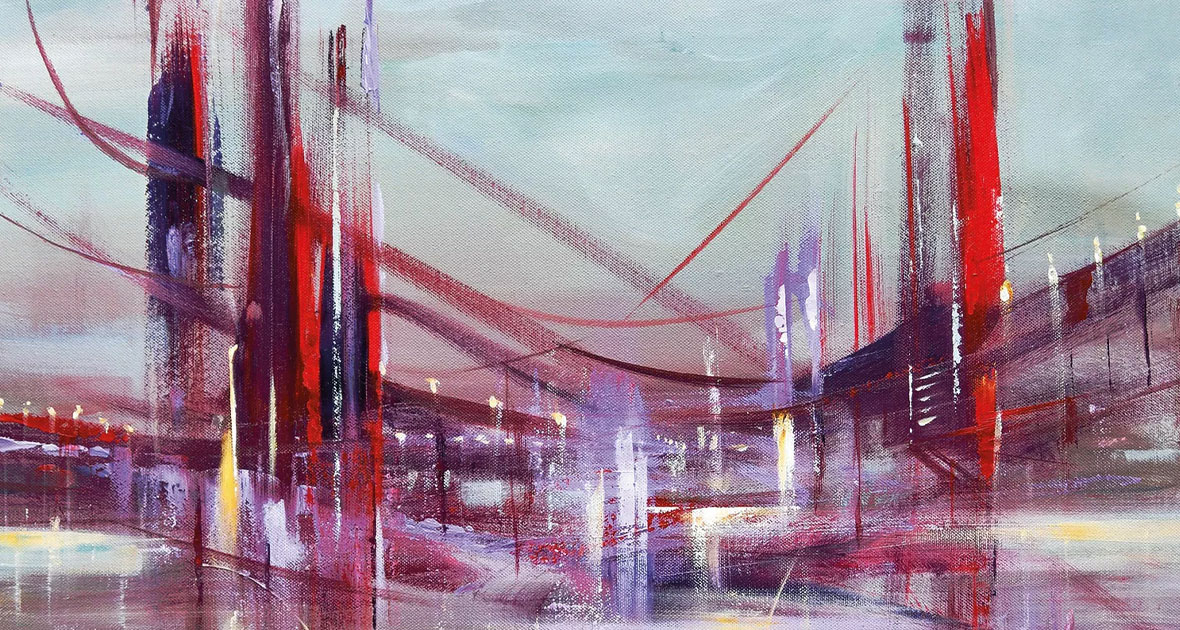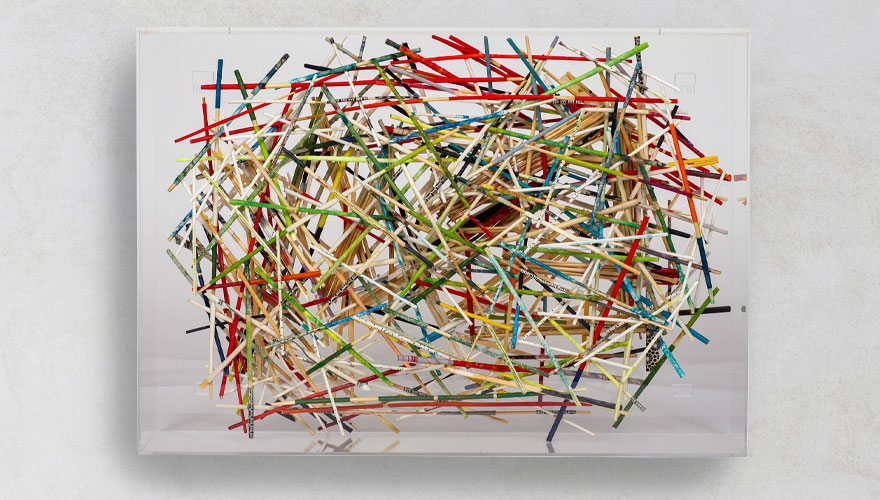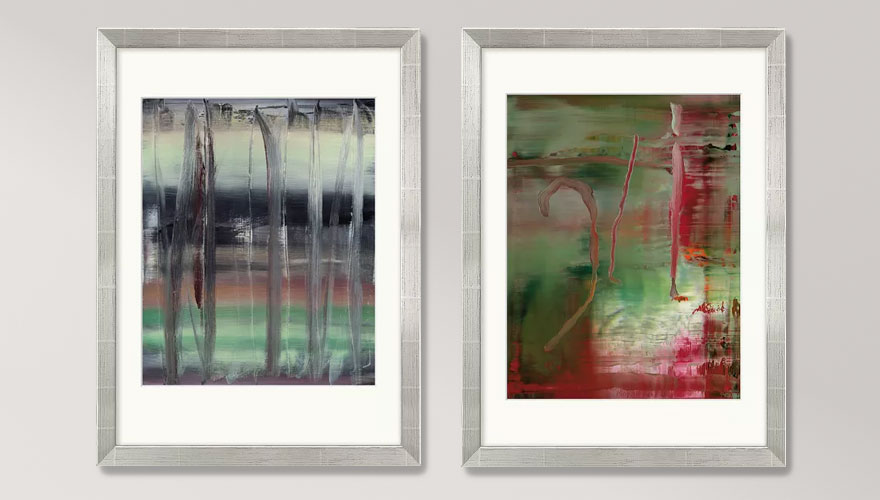
Contemporary Art: At the Cutting Edge
Gerhard Richter, Bruce Nauman, Tony Cragg, Anselm Kiefer, Cindy Sherman, Rosemarie Trockel, Ólafur Elíasson and Georg Baselitz: They are all considered the most successful contemporary visual artists in the world today. They represent very different genres, such as painting, sculpture, installation, or object art, reflecting art at the beginning of the 21st century. This period is characterised by a great variety of styles, themes, and techniques. The term "Contemporary Art" primarily refers to a specific period of time that needs to be defined in more detail rather than concrete artistic features of 21st-century sculpture and painting.
What is Contemporary Art?
The question "What is contemporary art?" is not easy to answer. In fact, there is little consensus on which phase of art history the term should denote. First of all, contemporary art can be clearly distinguished from Modern Art. For a long time, the two terms were used synonymously. Nowadays, however, the term "Modern Art" is used exclusively for art of the modern era, which emerged approximately in the phase from the late 19th century to the 1940s.
The term "Contemporary Art" on the other hand, in a narrow definition, refers to all those works that were created for and during a specific time. These works are closely linked to the current context, referencing the present situation and events. Additionally, their creation process and public reception occur in close proximity.
However, "Contemporary Art" is often used to refer to a more extended period of time. In this definition, the term no longer refers only to the art of the here and now but encompasses works from several decades. The starting point for this varies greatly. Some consider it to be after the end of the Second World War, and others see it as starting in the 1960s. Very good examples of this approach can be found in the titles of exhibitions, fairs, collections, catalogues, and galleries. For example, the "Collection of Contemporary Art of the Federal Republic of Germany" includes works from 1949 to the present day. Many important and influential styles of art history belong to this broader definition, for example, Abstract Expressionism, Surrealism, Minimalism, Ready-Mades, or Pop Art.

Contemporary Art Movement - Wide Variety of Styles and Techniques
Unlike many other epochs, there is currently no dominant style that characterises the entire art scene. Instead, contemporary art at the beginning of the 20th century exhibits a wide range of styles. For example, contemporary art includes works that can be associated with Expressionism, Impressionism, Abstraction or Realism. However, artists also frequently switch between or combine styles.
The techniques are also diverse. Traditional genres such as painting, drawing, photography, and sculpture remain popular. At the same time, however, many other forms of representation, such as Street Art and Urban Art, Video Art, Performance, Installation, Conceptual Art, and Digital Art have emerged, including the use of Artificial Intelligence. The boundaries between these techniques are now also fluid.
Tasks and Content of Contemporary Art
According to both its own self-perception and the public's view, the contemporary art movement carries social responsibilities and certain tasks to fulfil. The most obvious expectation of contemporary art is to create something new and unprecedented. As far as possible, it should not copy familiar modes of representation and styles, breaking with familiar traditions and offering unfamiliar perspectives on content, form, and genres.
In addition to a progressive picture and artistic form concept, contemporary visual art is increasingly expected to take a stance in terms of content. Its central function is, therefore, to hold up a mirror to the world. Art should offer a space for reflection and criticism. Contemporary artists are supposed to challenge reality, stimulate discussion, and highlight contradictions and flaws in systems such as politics, culture, the economy, and society.
Established rules and conventions in human behaviour or questions of perception should also be reflected upon. Deliberate provocation is a typical characteristic of the contemporary art movement in achieving these goals. In order to attract the necessary attention, the works are often uncomfortable, unsettling or disturbing. However, this is not an end in itself. Rather, artists aim to shake things up and expose everything that the public tends to turn a blind eye to. Only in this way can they fulfil their task of making a significant contribution to public discourse.
In recent years, contemporary art has also been expected to adopt a self-critical stance - both from within and outside. After all, certain mechanisms and peculiarities of the current art market have been the subject of much criticism. Criticisms include concerns about the growing commercialisation and the market pressure on art. The sometimes elitist aloofness of the art scene and the tendency to scandalise also encounter little approval. There is also public debate about how justified the sometimes astronomical auction results for a few works of art are. Many artists are responding to these impulses. In their works, they question the logic of the market and put their own role and purpose up for discussion.

Characteristics of Contemporary Art: Mechanisms and Markets
Due to the great diversity of styles and techniques, it is difficult to comprehensively describe the visual arts of the 21st century with just a few characteristics. In addition to the purely artistic side, however, some general conditions stand out as typical for contemporary art, influencing the creative process.
Firstly, it can be noted that visual art is more widespread today than ever before. The removal of various political, economic, and social boundaries has allowed the visual arts to establish itself in increasingly more aspects of life. Globalisation, digitalisation, and web technologies ensure that both the number of consumers and producers of art is greater than ever before.
New markets and distribution channels have transformed the visual arts into a significant economic factor. Art auctions generate billions in sales every year, and fairs, galleries and exhibition centres are constantly attracting record numbers of visitors. Artworks have become an established form of capital investment.
However, this progressive commercialisation also sparks much criticism. These conditions are responsible for superficial, indiscriminate, and arbitrary art. Artists may be too orientated towards the needs of the market, deviating from their individual creative impulses. Risk-taking diminishes, and economic pressure impedes the free development of contemporary artists.
Technologisation also represents both an opportunity and a challenge. For example, contemporary painting in the 21st century must engage with artificial intelligence. However, many artists also purposefully use digital technologies and utilise them creatively. These developments are recognisably shaping the contemporary art movement and will continue to do so. After all, contemporary art is always at the cutting edge, evolving as quickly as the world in which it is created.
